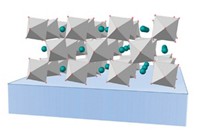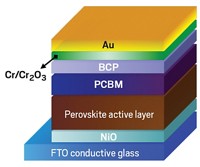Advertisement
Grab your lab coat. Let's get started
Welcome!
Welcome!
Create an account below to get 6 C&EN articles per month, receive newsletters and more - all free.
It seems this is your first time logging in online. Please enter the following information to continue.
As an ACS member you automatically get access to this site. All we need is few more details to create your reading experience.
Not you? Sign in with a different account.
Not you? Sign in with a different account.
ERROR 1
ERROR 1
ERROR 2
ERROR 2
ERROR 2
ERROR 2
ERROR 2
Password and Confirm password must match.
If you have an ACS member number, please enter it here so we can link this account to your membership. (optional)
ERROR 2
ACS values your privacy. By submitting your information, you are gaining access to C&EN and subscribing to our weekly newsletter. We use the information you provide to make your reading experience better, and we will never sell your data to third party members.
Energy
Custom Chemistry Improves Solar Cells
Promising but unstable light absorber can be used by controlling stoichiometry
by Mitch Jacoby
January 12, 2015
| A version of this story appeared in
Volume 93, Issue 2
In the ongoing push to advance solar cells based on low-cost materials with a perovskite crystal structure, researchers at South Korea’s Korea Research Institute of Chemical Technology (KRICT) report a strategy for making use of an electronically promising but chemically unstable light-absorbing compound. Most studies in this fast-paced research area have focused on methylammonium lead iodide, (CH3NH3)PbI3. Using a related compound, formamidinium lead iodide, HC(NH2)2PbI3, could increase the range of solar radiation absorbed by a photovoltaic cell and thereby improve its performance. But that compound undergoes a spontaneous, undesirable phase transition from a black perovskite to a yellow nonperovskite that does not absorb as broadly and exhibits inferior charge-transport capabilities. KRICT’s Nam Joong Jeon, Jun Hong Noh, Sang Il Seok, and coworkers now show that the formamidinium compound can be used to make stable solar cells by blending it with small amounts of methylammonium lead bromide (MAPbBr3) in select molar ratios (Nature 2015, DOI: 10.1038/nature14133). An unoptimized cell made with a MAPbBr3 mole fraction of 0.15 resulted in an 18.5% efficient solar cell. That value comes close to the 20.1% efficient record-holding perovskite solar cell, which also was made at KRICT.





Join the conversation
Contact the reporter
Submit a Letter to the Editor for publication
Engage with us on Twitter